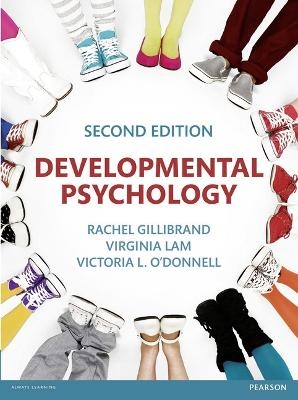
Developmental Psychology
Pearson Education Limited (Verlag)
978-1-292-00308-5 (ISBN)
Does it really make a difference if we talk to babies even though they can’t understand us?
What makes children with the same parents have different characters?
At what age are children likely to become involved in cyberbullying?
Developmental Psychology 2nd edition provides a clear and lively coverage of the main topics and concepts required by the British Psychological Society (BPS). The book takes a broadly topical organisation addressing the social and cognitive strands of development, providing an intuitive pathway through the core topics, and a final section which focuses on the clinical and applied aspects of the subject. This second edition include updated and expanded coverage of play, motor development, genetics and research methods
Rachel Gillibrand is a Senior Lecturer in Psychology at the University of the West of England. Virginia Lam is a Senior Lecturer in Psychology at the University of East London. Victoria L. O'Donnell is a psychologist and Director of Learning Innovation at the University of the West of Scotland
Contents
Section I Introduction to developmental psychology
Chapter 1 What is developmental psychology?
The debates of developmental psychology
What is ‘normal’ development?
Chapter 2 Theoretical perspectives
What is a theory?
Theoretical perspectives
Psychoanalytical perspective of development
Biological perspectives on development
Learning perspectives on development
Cognitive perspective on development
Integrative perspectives in developmental psychology
Chapter 3 Research methods
What is research?
The importance of understanding theoretical paradigms
Methods in developmental psychology research
Working with children
Section II Cognitive and linguistic development
Chapter 4 Prenatal development and infancy
How to grow a baby: the roles of nature and nurture in early development
Prenatal physical development
Prenatal development of the brain
Prenatal abilities and behaviour
Risks to prenatal development: environmental teratogens and genetic errors
Birth
The neonate: basic states, movements and reflexes
The postnatal development of the brain
Infant vision
Infant audition
Infant touch, taste and smell abilities
Motor abilities in infancy
Cognitive abilities in infancy: general models and approaches
Infant attention
Infant learning and memory
Basic knowledge and understanding in infancy
Categorisation in infancy
Reasoning and problem-solving in infancy
Chapter 5 Language development
What is language?
What communication is there before verbal communication?
The four components of language
How do infants’ early social interactions prepare them for later language?
Theories of development
Phonological development
Semantic development
Syntactic development
The development of pragmatics
Chapter 6 Memory and intelligence
What is memory?
Memory in children
What is intelligence?
Intelligence in children
Chapter 7 The development of mathematical thinking
What is mathematical thinking?
Understanding number
The number system as a tool for thinking
Reasoning and solving problems with numbers
The step into rational numbers
Chapter 8 Theory of mind
What is theory of mind?
How does theory of mind fit into a developmental perspective?
Theories explaining theory of mind
Theory of mind and children with autism
Section III Social and emotional development
Chapter 9 Attachment and early social experiences
What is attachment?
Measuring attachment
Attachment and childcare
Attachment beyond infancy
Chapter 10 Childhood temperament and behavioural development
What is temperament?
Studying and measuring temperament
Explanations for differences in temperament
Temperament in the long term
Chapter 11 Development of self-concept and gender identity
What are self-concept and social identity?
Theories in the development of the self-concept in children
Understanding gender categories: children’s gender identity
Chapter 12 Peer interactions and relationships
The peer group and peer interactions
Children’s friendships
Chapter 13 Adolescence
Physical changes during adolescence
Cognitive development and changes in the teenage years
Social development in the teenage years
Mental health in adolescence
Sex and relationship behaviour in adolescence
Section IV Clinical/applied aspects
Chapter 14 Development psychology and education
The application of developmental theory in classrooms
Five themes of ‘developmentally appropriate provision’
Chapt
| Verlagsort | Harlow |
|---|---|
| Sprache | englisch |
| Maße | 194 x 266 mm |
| Gewicht | 1140 g |
| Themenwelt | Schulbuch / Wörterbuch ► Schulbuch / Berufs- und Fachschule |
| Geisteswissenschaften ► Psychologie ► Entwicklungspsychologie | |
| ISBN-10 | 1-292-00308-1 / 1292003081 |
| ISBN-13 | 978-1-292-00308-5 / 9781292003085 |
| Zustand | Neuware |
| Haben Sie eine Frage zum Produkt? |
aus dem Bereich


